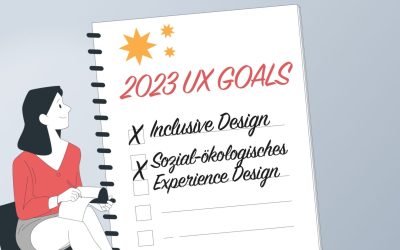When we speak of User Experience most people think of human-machine interaction. Wikipedia’s second sentence on the subject is:
„User experience includes the practical, experiential, affective, meaningful and valuable aspects of human–computer interaction and product ownership.“ en.wikipedia.org/wiki/User_experience
UX, however, has been around way longer than computers, and its goal is not only to enhance the human-machine interaction, as Nielsen and Norman state:
„User experience“ encompasses all aspects of the end-users interaction with the company, its services, and its products.“
One reason it might be associated so strongly as a discipline in the creation of human-machine interaction is that its results are most visible here because the initial barrier is so high. Currently, most humans will still need to acquire far more knowledge to interact with an application than with a tea kettle. One reason is that they did not grow up with the technology and spent their childhood learning by watching elders interact with an application, making the system more alien. Another reason, however, is that interaction with an application can be far more complex than with a tea kettle.
But, is there user experience in the use of a tea kettle?
Ali Rushdan Tariq’s blog post on the history of user experience illustrates quite nicely what user experience is, where it has its emphasis and why it is mostly associated with human-machine interaction:
„As technology and the internet continue to weave themselves into our lives, we can expect to see UX continue to evolve.“ The history of user experience
It is not that user experience hasn’t been around but that it has been invisible to us, as we have not talked about it (or even named it up until 1995) because of its vagueness and for lack of a better word „softness“. Even though there is an official standard (ISO 9241-210,[1] ) for user experience design, the description of the standard is packed with a fuzziness that cannot be measured with standard analytics tools.
„According to the ISO definition, user experience includes all the users‘ emotions, beliefs, preferences, perceptions, physical and psychological responses, behaviours and accomplishments that occur before, during and after use.“ en.wikipedia.org/wiki/User_experience#Definitions
The standard was created as guidance for human-machine interaction but its definition can be applied to the use of anyTHING or any service for that matter, which also includes the use of a tea kettle.
To answer the initial question: yes, there is user experience in the use of a tea kettle.
The problem, however, is: we might be able to measure the long list of „emotions, beliefs, preferences, perceptions, physical and psychological responses, behaviours and accomplishments“ through extensive research. But an important question is: how do we / can we measure subjective and personal emotions, beliefs, and perceptions,…? You will not be able to export those personal experiences into spreadsheets, apply a formula to them, and receive a number between 0 and 100. Humans themselves are too diverse and have very different backgrounds, which would always have to be taken into consideration when applying mathematics to their behaviour.
The result of great user experience however is visible in the shape of happy customers that love and recommend your service or product and this is something every great and passionate business has been trying to achieve since the beginning of commerce. As we are interested in finding out more about what makes customers happy, we have decided to start a small series on the subject. Keep your eyes open for the tag #myexperience.
Photo
Nathan Dumlao on Unsplash





